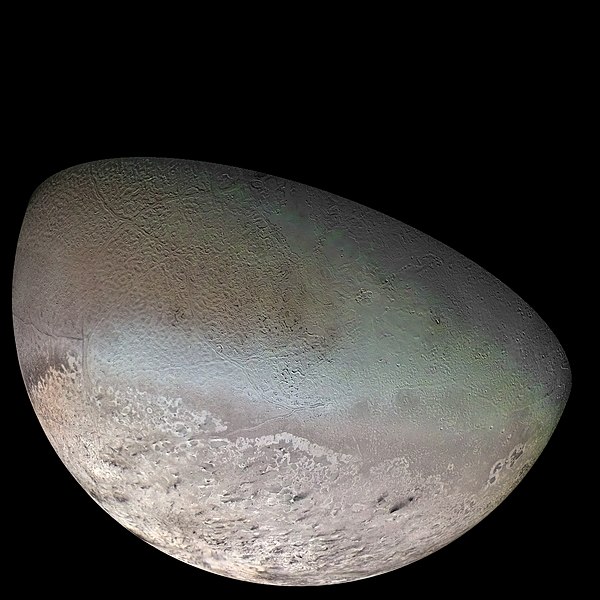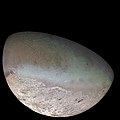Tiedosto:Triton moon mosaic Voyager 2 (large).jpg
Siirry navigaatioon
Siirry hakuun

Tämän esikatselun koko: 600 × 600 kuvapistettä. Muut resoluutiot: 240 × 240 kuvapistettä | 480 × 480 kuvapistettä | 768 × 768 kuvapistettä | 1 024 × 1 024 kuvapistettä | 2 048 × 2 048 kuvapistettä | 4 700 × 4 700 kuvapistettä.
Alkuperäinen tiedosto (4 700 × 4 700 kuvapistettä, 12,11 MiB, MIME-tyyppi: image/jpeg)
Tiedoston historia
Päiväystä napsauttamalla näet, millainen tiedosto oli kyseisellä hetkellä.
| Päiväys | Pienoiskuva | Koko | Käyttäjä | Kommentti | |
|---|---|---|---|---|---|
| nykyinen | 10. lokakuuta 2011 kello 21.40 |  | 4 700 × 4 700 (12,11 MiB) | Jbarta | Minimally compressed JPG from TIFF original at NASA. This image has already been colored by NASA. I think we have no business trying to "fix" the coloring. The only alteration made from the NASA original is to enlarge the canvas to enclose the complete sp |
| 1. tammikuuta 2010 kello 23.00 |  | 4 600 × 4 600 (2,81 MiB) | Supportstorm | Image Adjustments: Auto levels on contrast and color | |
| 18. helmikuuta 2008 kello 23.59 |  | 4 600 × 4 600 (1,71 MiB) | Kaldari | same image, better dimensions | |
| 8. huhtikuuta 2005 kello 06.59 |  | 4 500 × 3 500 (1,96 MiB) | Bricktop | same image, higher resolution | |
| 3. huhtikuuta 2005 kello 19.13 |  | 1 024 × 796 (150 KiB) | Smartech~commonswiki | A color mosaic of Triton, Neptune's moon (large). Taken by Voyager 2 in 1989. Color was synthesized by combining high-resolution images taken through orange, violet, and ultraviolet filters; these images were displayed as red, green, and blue images and |
Tiedoston käyttö
Seuraavat 3 sivua käyttävät tätä tiedostoa:
Tiedoston järjestelmänlaajuinen käyttö
Seuraavat muut wikit käyttävät tätä tiedostoa:
- Käyttö sivustolla af.wikipedia.org
- Käyttö sivustolla an.wikipedia.org
- Käyttö sivustolla ar.wikipedia.org
- Käyttö sivustolla ary.wikipedia.org
- Käyttö sivustolla arz.wikipedia.org
- Käyttö sivustolla ast.wikipedia.org
- Käyttö sivustolla azb.wikipedia.org
- Käyttö sivustolla az.wikipedia.org
- Käyttö sivustolla be-tarask.wikipedia.org
- Käyttö sivustolla be.wikipedia.org
- Käyttö sivustolla bg.wikipedia.org
- Käyttö sivustolla bn.wikipedia.org
- Käyttö sivustolla bn.wikibooks.org
- Käyttö sivustolla bs.wikipedia.org
- Käyttö sivustolla ca.wikipedia.org
- Neptú (planeta)
- Satèl·lit natural
- Satèl·lits de Neptú
- Voyager 2
- Cronologia del descobriment dels planetes del sistema solar i dels seus satèl·lits naturals
- Viquipèdia:Articles espacials seleccionats
- Plantilla:Article espacial 01
- Llista d'objectes del sistema solar en equilibri hidroestàtic
- Llista de satèl·lits naturals
- Nomenclatura dels satèl·lits naturals
Näytä lisää tämän tiedoston järjestelmänlaajuista käyttöä.


